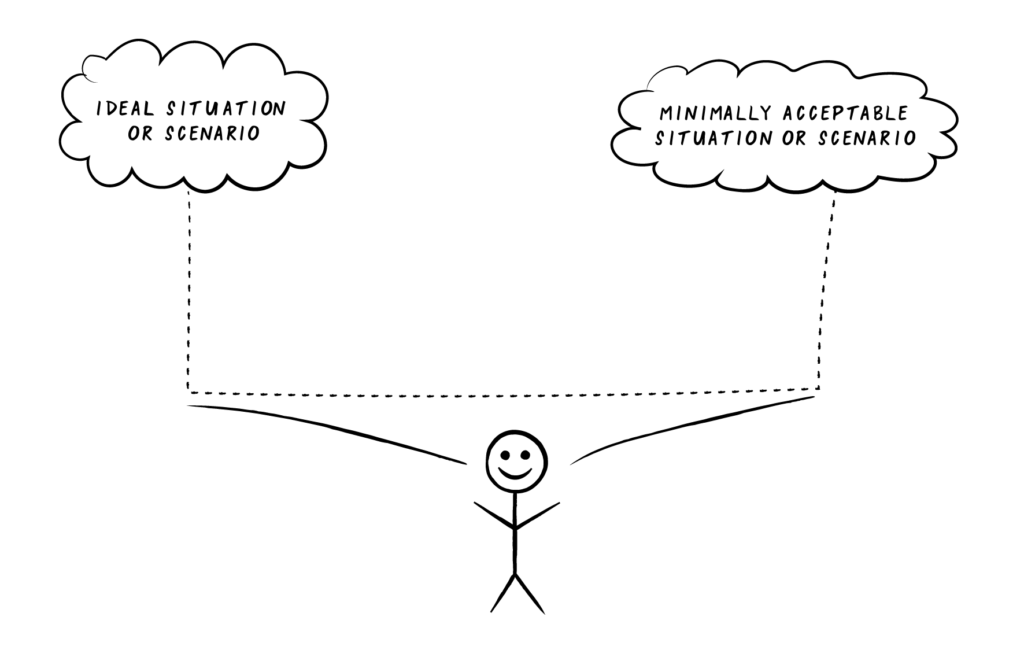What Is Your Vision?

Once you’ve taken an inventory of what has worked so far, and what hasn’t and you’ve gathered some ideas about what could change or improve going forward, you’ll need to shift focus to imagine the person you want to be and the life you want to live. It’s in this step that we want to challenge your limiting beliefs and give voice to your dreams.
The word vision itself can be a challenge to many of us because we automatically think we need to come up with a crystal clear picture of what we want to have one, three, or five years from now.
At the end of the day, our vision is the imaginary thing pulling us forward.
It can be fueled by something inspiring or it can be fueled initially by something perceived as negative. I remember being inspired to create a compelling vision that included returning to my high school one day as a successful professional. This came about because an administrator told me that because of who my father was, I would never amount to anything so I shouldn’t bother taking “advanced level” courses. That negative feedback prompted me to bigger and better goals: ones that I might not have aspired to.
The key here is not to get caught up in the concreteness of Vision. Vision has nothing to do with being concrete. It has everything to do with suspending disbelief, wondering what the future could hold and articulating that possibility.
As you define your vision, shoot for clarity and focus as much as you can. For example, if you see yourself operating from anywhere in the world, serving more specialized types of customers, or experimenting with different products or services, write it all down. A key part of creating that vision is to ensure it’s clear, whatever it might be.
Step 1: Create a Range of View
As we discussed, the most powerful visions address and align your dreams. But, when we start to envision a significant accomplishment—something that might be well beyond what we’ve achieved in the past — the question that most of us ask is “how can I actually do this?” and we start editing. This is the wrong question at this point in this system because you don’t know how to do it. If you did, you’d likely already be doing it and living that reality.
I created the concept of the Range of View to allow that big vision to exist on paper as one possibility rather than edit it down. I call it the Ideal Scenario. Sometimes we’re not super clear about what we want but we are clear about what we don’t want. At the other end of the range, then, is what has to happen, the bare minimum. I call this the Minimally Acceptable Scenario.

This is what I love most about creating a Range of View: we’ve effectively created some descriptions of milestones on the path from where we are now to the ideal situation. So by describing the ideal and the minimally acceptable, we can mark out what this Facet of Daily Living looks like at different points in the range, which could be milestones or the vision you are going for.
For each of the Facets of Daily Living that you went through in Taking Life Inventory it’s now time to create a Range of View Vision.
For now, you want to describe, in as much detail as possible, what the ideal for each of your chosen Facets of Life looks like to you. Write in the present tense so that if you read that description again you’ll be able to clearly identify whether you met it or not.
Engage all of your senses to describe the results you want for each Facet of Life. What will you see and hear? How does this benefit you? How does this vision benefit others? Repeat for the minimally acceptable version. Then, repeat for each of the Facets of Daily Living.
Step 2: Defining Your Destination
Defining your life vision is like building your dream home from scratch. If you were designing a house, you’d now have specific ideas about how you want certain elements, like maybe your kitchen, to look and feel. How it might influence the traffic flow in that part of the house and why that appeals to you. Once you have clarity on all those aspects, a designer can usually come up with a visual representation for you of the entire house, so you can see how it all comes together.
When we are designing your life we follow a similar process. We want to create the vision for our life a year from now. If you can see beyond the end of twelve months, then jot that down as well.
The exercise in this step is to imagine that you’ve been pulled into an alternate reality. It’s one year from tomorrow and you are having a conversation with your future self.
What does the future you tell you about what happened over the past year? Why is he or she excited?
If you wrote down any ideas for your life beyond twelve months, they may come in handy in this next step. Let’s forecast this life three years from now and then answer the question about what you are most proud of.
What are three things you’ll be proud of three years from now?
Take your time with your vision work.
